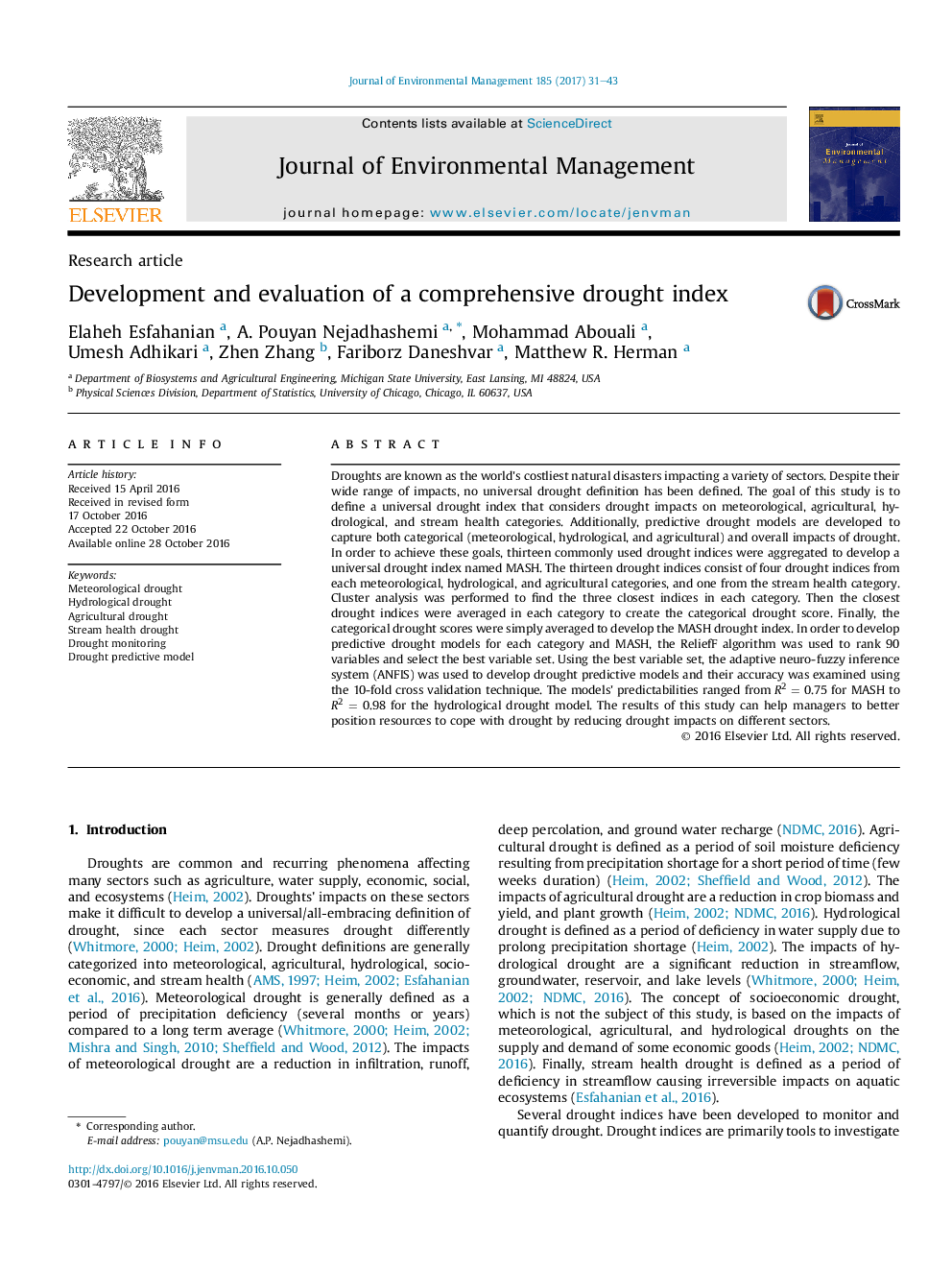| کد مقاله | کد نشریه | سال انتشار | مقاله انگلیسی | نسخه تمام متن |
|---|---|---|---|---|
| 5117338 | 1485229 | 2017 | 13 صفحه PDF | دانلود رایگان |
عنوان انگلیسی مقاله ISI
Development and evaluation of a comprehensive drought index
ترجمه فارسی عنوان
توسعه و ارزیابی یک شاخص جامع خشکسالی
دانلود مقاله + سفارش ترجمه
دانلود مقاله ISI انگلیسی
رایگان برای ایرانیان
کلمات کلیدی
خشکسالی هواشناسی، خشکسالی هیدرولوژیکی، خشکسالی کشاورزی، جریان خشکسالی سلامت، نظارت بر خشکسالی، مدل پیش بینی خشکسالی،
موضوعات مرتبط
مهندسی و علوم پایه
مهندسی انرژی
انرژی های تجدید پذیر، توسعه پایدار و محیط زیست
چکیده انگلیسی
Droughts are known as the world's costliest natural disasters impacting a variety of sectors. Despite their wide range of impacts, no universal drought definition has been defined. The goal of this study is to define a universal drought index that considers drought impacts on meteorological, agricultural, hydrological, and stream health categories. Additionally, predictive drought models are developed to capture both categorical (meteorological, hydrological, and agricultural) and overall impacts of drought. In order to achieve these goals, thirteen commonly used drought indices were aggregated to develop a universal drought index named MASH. The thirteen drought indices consist of four drought indices from each meteorological, hydrological, and agricultural categories, and one from the stream health category. Cluster analysis was performed to find the three closest indices in each category. Then the closest drought indices were averaged in each category to create the categorical drought score. Finally, the categorical drought scores were simply averaged to develop the MASH drought index. In order to develop predictive drought models for each category and MASH, the ReliefF algorithm was used to rank 90 variables and select the best variable set. Using the best variable set, the adaptive neuro-fuzzy inference system (ANFIS) was used to develop drought predictive models and their accuracy was examined using the 10-fold cross validation technique. The models' predictabilities ranged from R2Â =Â 0.75 for MASH to R2Â =Â 0.98 for the hydrological drought model. The results of this study can help managers to better position resources to cope with drought by reducing drought impacts on different sectors.
ناشر
Database: Elsevier - ScienceDirect (ساینس دایرکت)
Journal: Journal of Environmental Management - Volume 185, 1 January 2017, Pages 31-43
Journal: Journal of Environmental Management - Volume 185, 1 January 2017, Pages 31-43
نویسندگان
Elaheh Esfahanian, A. Pouyan Nejadhashemi, Mohammad Abouali, Umesh Adhikari, Zhen Zhang, Fariborz Daneshvar, Matthew R. Herman,
